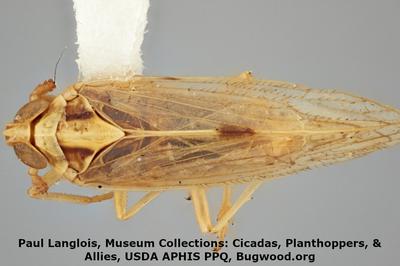Whitebacked Planthopper
Sogatella furcifera
Insect
In a Nutshell
- Wilting of leaves.
- Stunted growth.
- Brown ears with rusty or black-cracked kernels.
- Reduced grain production.
- Dark planthopper with translucent forewings with dark mark at the tip.
Can also be found in
Symptoms
Both nymphs and adults of the insect are found either at the base or on the upper part of the plants. The earliest signs are the wilting of leaves and stunting of plants due to the feeding activities on phloem sap and the damage of tissues which result in loss of water and nutrients. High population densities can lead to “hopperburn”, i.e leaves progressively turn orange-yellow from the tip to the mid vein, then dry up and die. Plants are stunted, develop fewer tillers and may lodge. Insects can also attack panicles, resulting in brown ears, rusty or black-cracked kernels, and reduced grain production.
Recommendations

Organic Control
Naturally-occurring biological control agents can normally keep populations of S. furcifera low. Predators include the mirid bug Cyrtorhinus lividipennis and some fairyflies of the genus Anagrus (A. flaveolus, A. perforator, A optabilis and A. frequens) that attack the eggs of the pest. There are also a number of predatory spiders that attack this pest, for example Lycosa pseudoannulata. Finally, the fungal pathogen Erynia delphacis can also help to reduce populations of the pest.

Chemical Control
Always consider an integrated approach with both preventive measures and biological treatments if available. Insecticides have been used heavily for management, which has resulted in the development of resistance. Oxamyl, some pyrethroids, buprofezin and pymetrozin should be alternated for an effective treatment.
What caused it?
The damage is caused by the whitebacked planthopper, Sogatella furcifera. Adults are about 3 mm long, light brown to black, and have translucent forewings with a characteristic dark brown mark at the tip. This insect attacks preferably high yielding varieties. Its high reproductive potential and its migratory habits makes it a major pest of rice in East-Asia and Australia. It also transmits viruses in a persistent manner, for example the rice black streaked dwarf virus and the southern rice black-streaked dwarf virus. Planting time, the excessive use of nitrogen and the availability of water for irrigation affect the populations significantly. Environmental factors such as temperature, humidity or rainfall are also key drivers in its life cycle.
Preventive Measures
- Select resistant varieties at planting.
- Plant early to avoid peak populations or use early maturing varieties if available.
- Plant simultaneously with neighboring fields in order to break the life cycle of the pest.
- Split the application of nitrogen.
- Do not grow more than two crops per year.
- Maintain fields free of rice or in fallow for a period of time.
- Drain the fields for 3 or 4 days twice during the growth season if heavy infestations occur.
- Avoid the use of broad scale insecticides as this can affect natural enemies.



